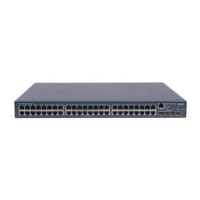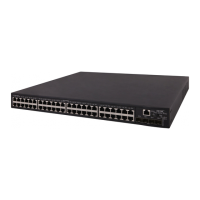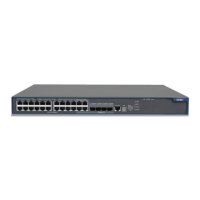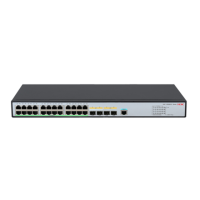1-40
We recommend that you keep this feature enabled.
Enabling BPDU Dropping
In a STP-enabled network, some users may send BPDU packets to the switch continuously in order to
destroy the network. When a switch receives the BPDU packets, it will forward them to other switches.
As a result, STP calculation is performed repeatedly, which may occupy too much CPU of the switches
or cause errors in the protocol state of the BPDU packets.
In order to avoid this problem, you can enable BPDU dropping on Ethernet ports. Once the function is
enabled on a port, the port will not receive or forward any BPDU packets. In this way, the switch is
protected against the BPDU packet attacks so that the STP calculation is assured to be right.
Follow these steps to enable BPDU dropping:
To do... Use the command... Remarks
Enter system view
system-view
—
Enter Ethernet
interface view
or Layer-2
aggregate
interface view
interface interface-type
interface-number
Enter
interface view
or port group
view
Enter port
group view
port-group manual
port-group-name
Required
Use either command.
Configurations made in
interface view will take effect
on the current port only;
configurations made in port
group view will take effect on
all ports in the port group.
Enable BPDU dropping for the
port(s)
bpdu-drop any
Required
Disabled by default
Displaying and Maintaining MSTP
To do... Use the command... Remarks
View information about
abnormally blocked ports
display stp abnormal-port
Available in any view
View information about ports
blocked by STP protection
functions
display stp down-port
Available in any view
View the information of port role
calculation history for the
specified MSTI or all MSTIs
display stp [ instance
instance-id ] history [ slot
slot-number ]
Available in any view
View the statistics of TC/TCN
BPDUs sent and received by all
ports in the specified MSTI or
all MSTIs
display stp [ instance
instance-id ] tc [ slot
slot-number ]
Available in any view

